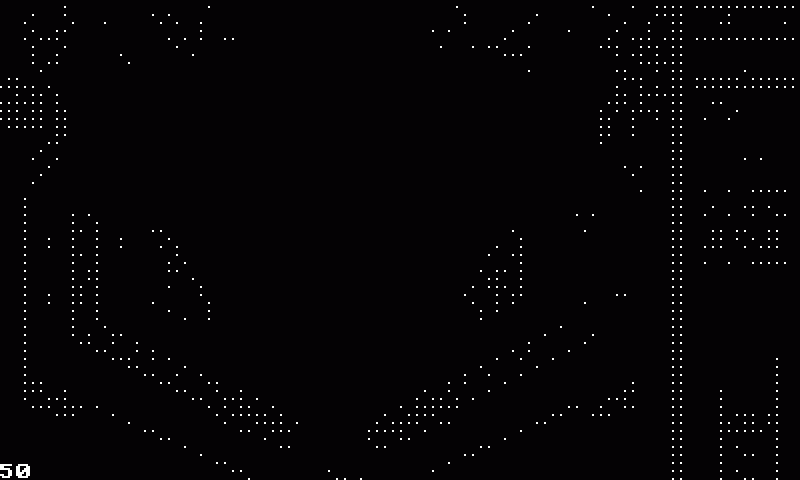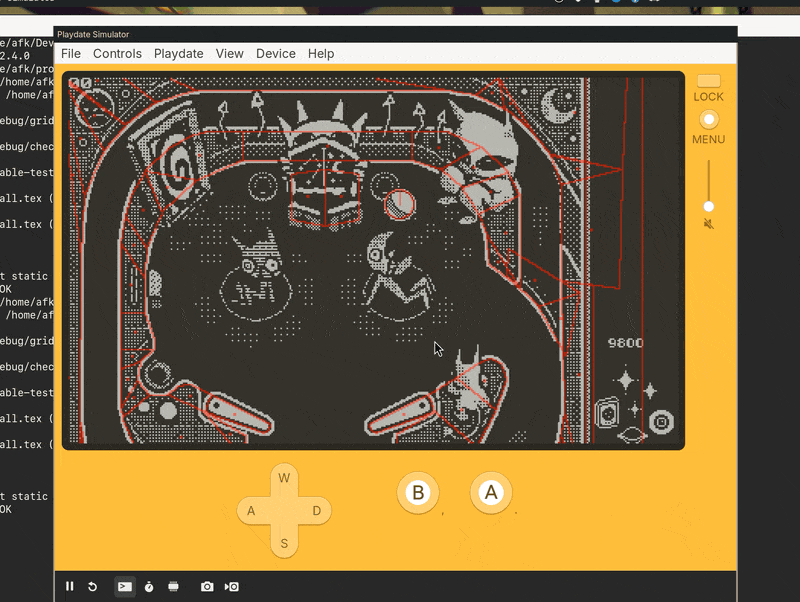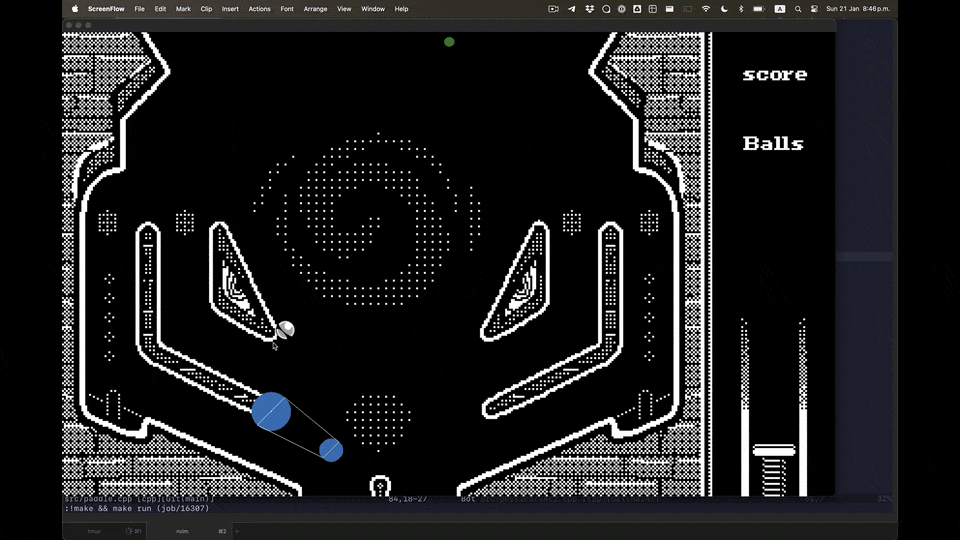Welcome to this not-December adventure, where I write about the process of our latest game, Devils on the Moon pinball.
So I have good and bad news. The good news is that we are releasing a game on the Playdate's second season!
I present to you: Catchadiablos!

You can learn more about Season 2 and the other great games that will release on May 29 at the Playdate Update #7.
The bad news is that we paused the development of Devils on the Moon Pinball for the past 6 months while we finished CatchaDiablos. That’s why there haven’t been any updates on it.
The good news is that both games share the same underlying engine (we call it Luna). When we left off Devils on the Moon Pinball, we didn’t have a sound engine, a save system, or text rendering. It's the first time I needed to code that from scratch. So there was a big question mark about how long it would take — or even if I could pull it off.
Well finishing a game requires all of that so we did it for CatchaDiablos.
So even if we haven't worked on Devils on the moon pinball, we’ve made a lot of progress on the systems that will help us finish the game.
The bad news is that it's not a pinball game. You’d think that after spending months developing our own custom physics and pinball systems we would do something remotely related to a pinball game, but we didn't.
The good news is that it's a really cool game and we’re super proud of how it turned out. I'm not going to spoil anything, but it has some mechanics we have always wanted to play with and now we got the chance to make them.
We learned a lot in the process and will write more once it's released.
The other good news is we are still planing to release Devils on the Moon Pinball before the year ends, you can wish list it now on Catalog. We even made a ridiculous video that showed up in the Playdate Update #6 to announce the game’s catalog page launch.
Now for real, see you in the next adventure: The physics debugger.



















Comments